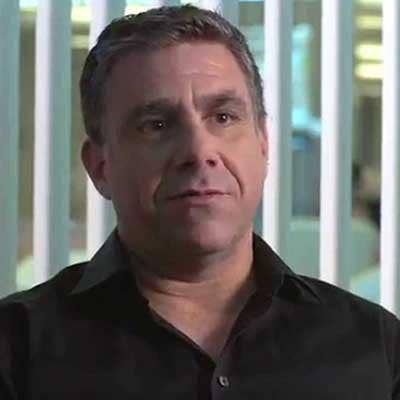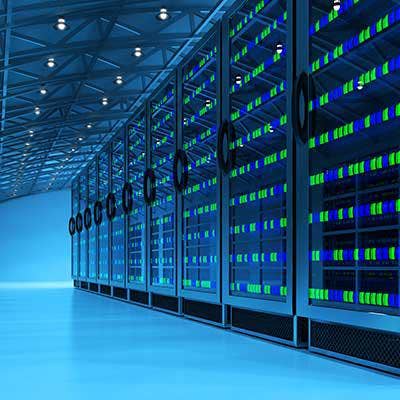CRN Exclusive: Western Digital President, COO Cordano On Importance Of Investing In Hard-Drive, Flash Technology

Breathing New Life Into Spinning Disks While Laying Future For Flash Storage
For all the talk about the growing strength of the flash storage market compared with the market for spinning disks, Western Digital makes a strong case for continued investment in hard drives, with a focus on large-capacity, slower enterprise-class drives where the company expects that a cost-per-terabyte of about one-tenth that of flash will keep those drives spinning into the far future.
Michael Cordano, WD’s president and chief operating officer, told CRN the San Jose, Calif.-based company’s investment in hard-drive technology, particularly a $300 million investment in developing the damascene recording head technology it says it needs for MAMR, or microwave-assisted magnetic recording, hard drives to move into the 80-TB and beyond range, is only part of where the company is investing.
Cordano discussed the company's investments and touched on the ongoing dispute between WD and rival Seagate over the future of the Toshiba flash storage business in which WD has been an active joint-venture partner for years.
Here's what Cordano had to say about the future of storage media and the future of Western Digital.

It’s interesting to see WD invest so heavily in improving hard-drive capacity at a time when flash drive sales and capacity are both growing so quickly.
In the end, there are competing forces. And ultimately, the infrastructure, whether it be in the data center or outside, is going to look for the [most] optimal solution available. And ultimately, it’s a trade-off of cost and performance.
The reason we went forward with this investment and this announcement is, number one, for big data and repositories in the data center, and I think we talked about adjacent markets like surveillance, the relative TCO [total cost of ownership] remains very compelling for data center operators and solution providers. And [here is something] you should also think about: As we continue to sequentialize data, the performance benefit on a relative basis between flash and disk gets diminished.

How so?
When you hear about these TCO benefits from fast data as a displacement for performance enterprise hard drives … the cost-performance benefit [of flash] is clear and present. You saw us discontinue investment in performance HDDs for that reason. So it was a very clear benefit of flash-based devices over that use case for hard drives.
In the case of big data and the capacity enterprise [drives], it’s quite different. So as you look at the need for growth, the cost-performance trade-off is actually quite compelling. And as you sequentialize it, you don’t even need to have a 10[X] or 15X [difference in cost-per-terabyte] to still maintain a very compelling TCO benefit. Because since you don’t get the performance enhancements that contribute to your TCO calculation, you actually could make the case that, even at 2[X] or 3[X] or 4X, there’ll be continued benefits in continuing on with hard drives.

When you say 'sequentialize' the data, are you talking about changes in how data is stored today versus in the past?
That’s exactly right. And the guys that are most aggressively doing this are the hyper-scalers. They control their file systems. They control the way data is delivered to the storage layer. For example, the fact that they’ve done this gives them two benefits. One is the differentiation between flash and disk on a performance basis. But it also allows them to take advantage of shingle magnetic recording, which is very well optimized to a sequential workload.
Those changes, and the fact that they are able to accelerate those changes, is one of the levers that continues to give them a big advantage over a traditional systems company that has more ’heavy lifting’ to do in their file systems.

Do you see hyper-scalers as the primary market for the new higher-capacity enterprise drives going forward?
For big data in general, the place where that’s growing the fastest is the hyper-scale community. But we do see on-prem use cases and applications expanding and growing there. So, it’s really anything [related to] storage deployed at scale you’ll see this benefit. You also see, just to go off on a tangent for a second to support our argument, we are investing heavily in our ActiveScale line. That’s an object storage system that is our ability to integrate these great device technologies into our own systems and work with end users and solution providers to provide that hyper-scale-like experience on-prem.

WD provides storage media to other system vendors providing archiving storage as well. Does WD run the risk of competing with those vendors with ActiveScale?
We had a stated strategy to enter the systems space for some time. That is not new news to those players. It’s an evolving ecosystem. Obviously, we are doing business with end users. But this is an opportunity in certain instances for us to actually partner with some of our traditional customers. So obviously there a sort of co-opetition thing happening here. We’re very cognizant of it. But this is something we’re obviously committed to, and we’re bullish about. And it’s certainly not new news to any of our partners or customers.

WD is making a big investment in the future of hard disk technology.
The $300 million we talked about was in deploying damascene [technology] into our head fabrication processes. That’s primarily a Capex investment to get that done. But that’s sort of the magnitude required to move our head fabrication … to damascene. And damascene is a different process. It takes time to mature. It takes time to make it right even to [use with] PMR technology, but it is an absolutely required enabled technology for MAMR.

On the flash side, Western Digital lost a bid to acquire Toshiba’s flash storage business to a consortium including Seagate and Apple. How does that impact WD’s investment in flash storage technology going forward?
We obviously can’t say much about that because it’s an ongoing situation. I will say, independent of that, a few things. One, we’re committed to the flash marketplace. We are fully confident that we’ll be able to pursue our strategy there. And then, relative to the [Toshiba] situation itself, the joint venture and the health of the joint venture remains our primary concern. We’re confident that we will be able to continue to basically pursue and protect that valuable JV [joint venture] and those objectives.

Regardless of what happens with the Toshiba joint venture, is WD’s strategy regarding strategic technology acquisitions to build the flash business?
Relative to investment in non-volatile memory, more broadly defined, certainly flash is one thing, and we have plans there. But then there’s next-generation memory. Three of those where we have various levels of activity and that we intend to pursue as a fundamental part of our strategy -- which ones and how much we haven’t disclosed -- but we are active in ReRAM [resistive random active memory], we’re active in phase-change memory, and we’re active in MRAM [magnetoresistive random active memory], all three of which we think are interesting business opportunities for us. They all serve uniquely different application and use case sets in the marketplace. They have different characteristics. So it’s not pick one of the three. It’s about, likely all three will continue to evolve, and there will be a commercial application for them. We just have to pick our spots and prioritize.

What percentage of Western Digital’s R&D investment goes to spinning disk versus non-volatile memories going forward? How do you assign your investment dollars?
We have not disclosed those ratios. Suffice it to say, we have an ambitious innovation appetite and investment. We will pick our spots. I think we disclosed one of those [this month] on the hard-drive side. We continue to make investments on hard-drive [technology]. Obviously, that market’s changing. What we deem as important is changing. That will obviously reflect on the way we make those investments. In general, we’ve been increasing our investments in non-HDD things. That includes flash. But you see us active in the systems world and elsewhere.
From our standpoint, we have a very healthy business. We believe in R&D as a driver of technology and products across the portfolio breadth. And we will continue to invest in HDD, flash, and other things in a very purposeful way.

Pretty much all of the technology and manufacturing related to WD’s hard disk and flash storage is done in-house. Is there a point at which the company would rely more on third-party components and manufacturing?
That’s a good question, and I’ll answer it this way: I think, where we think we can get commercial or technological differentiation, we will continue to invest in those technologies internally. As the market evolves, we are continuously re-evaluating that. If there were some thing that we deemed as a non-differentiated item, we would obviously consider a different strategy. But from our standpoint, you hear us, from the marketing lingo, [talk about] vertical integration. And to the extent all the way from the component, in this case heads and media, up through the device and into the system, same thing on flash, we see lots of interesting areas to innovate and to differentiate, and we want to take advantage of that.
As certain pieces of the ecosystem evolve, and we see them as not capable of that innovation and differentiation, we might look at them differently.